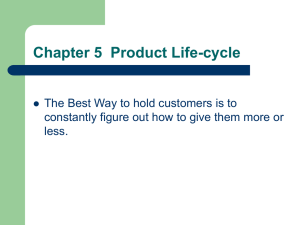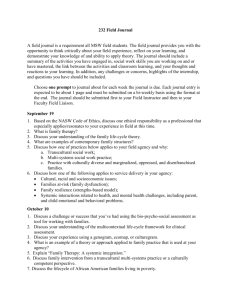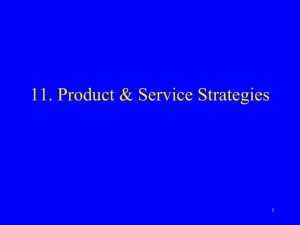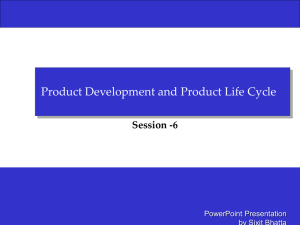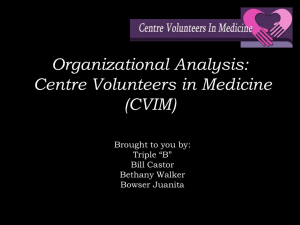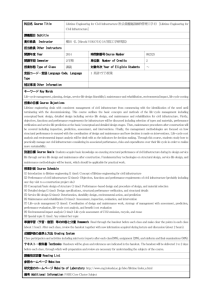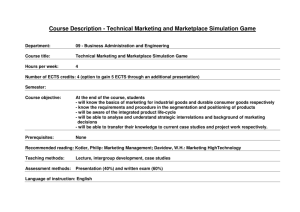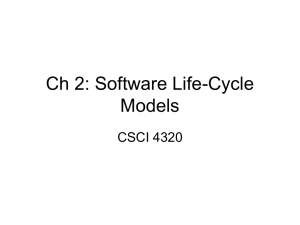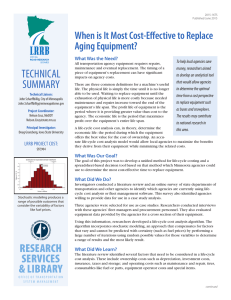Product class
advertisement
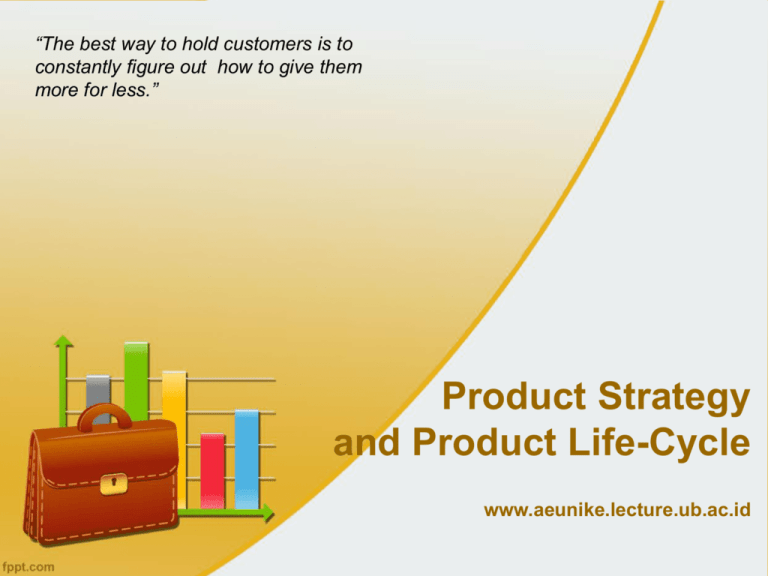
“The best way to hold customers is to constantly figure out how to give them more for less.” Product Strategy and Product Life-Cycle www.aeunike.lecture.ub.ac.id The Product and the Product Mix • Product – – – – – – – – – – Physical goods Services Experiences Events Persons Places Properties Organizations Information Ideas Components of the Market Offering The Product and the Product Mix • Product levels Customer value hierarchy • • • • • Core benefit Basic product Expected product Augmented product Potential product Five Product Levels The Product and the Product Mix • Product classifications – Durability and Tangibility Classification: • Nondurable goods (example: soft drink, soap) • Durable goods (example: refrigerator, clothing) • Services (example: haircuts, legal advice, appliance repair) – Consumer-Goods Classification: • Convenience goods – Staples (example: ketchup, tooth-paste) – Impulse goods (example: candy bars, magazines) – Emergency goods (example: umbrella) • Shopping goods (example: clothing, furniture, used car) – Homogeneous shopping goods – Heteregoneous shopping goods • Speciality goods (example: cars, stereo components, photograhic equipment) • Unsougth goods (example: life insurance, gravestones, encyclopedia) The Product and the Product Mix • Product classifications – Industrial-Goods Classification: • Materials and parts – Farm products, Natural products, Manufactured materials and parts: Component materials, Component parts • Capital items – Installation (example: factories, offices) – Equipment (example: lift trucks, computers) – Supplies and business servicess: • • • • Maintenance and repair item (example: paint, brooms) Operating supplies (example: pencils, paper) Maintenance and repair services (example: window cleaning) Business advisory services The Product and the Product Mix DIFFERENTIATION • Product differentiation – – – – – – – – – Features Customization Performance quality Conformance quality Durability Reliability Repairability Style Design The Product and the Product Mix • Services differentiation – Ordering Ease – Delivery – Installation – Customer training – Customer consulting – Maintenance and repair The Product and the Product Mix • Product Hierarchy – Need family >>> core need (example: security) – Product family >>> satisfy core need (example: savings and income) – Product class >>> certain functional coherence (example: financial instruments) – Product line >>> group of product related to product class (example: life insurance) – Product type >>> group of items (example: term life insurance) – Item The Product and the Product Mix • Product mix (Product assortment) – Product mix has a certain: • • • • Width, how many product Length, total number of item Depth, variants of each product Consistency, relationship of product lines in end use, production requirements, distribution channels, and some other way • Product-line decisions – Product-line analysis • Sales and Profits – Four types of product classes: • • • • Core product, high sales volume and heavily promoted Staples, lower sales volume and no promotion Specialities, lower sales volume but highly promoted Convenience items, high volume but less promoted – Market profile The Product and the Product Mix • Product-line length – Line Stretching • Downmarket Stretch – The company may notice strong growth opportunities as mass retailers attract a growing number of shoppers – The company may wish to tie up lower-end competitors who might otherwise try to move upmarket – The company may find that the middle market is stagnating or declining • Upmarket Stretch • Two-Way Stretch – Line Filling • Just-noticeable difference • Line Modernization, featuring, and pruning The Product and the Product Mix • Brand decisions – What is brand? • • • • • • Attributes Benefits Values Culture Personality User NEXT WEEK Product Life-Cycle • To say that a product has a life cycle asserts four things 1. Products have a limited life. 2. Product sales pass through distance stages, each posing different challenges, opportunities, and problems to the seller. 3. Profits rise and fall at different stages of the product life cycle. 4. Products require different marketing, financial, manufacturing, purchasing, and human resource strategies in each life strategies in each life-cycle stage. cycle stage. Product Life-Cycle Cost Product Life-Cycle Patterns Product Life-Cycle Style, Fashion, and Fad Life Cycles Product Life-Cycle • Marketing Strategies: Introduction Stage – The Pioneer Advantage • Inventor • Product pioneer • Market pioneer Product Life-Cycle • Marketing Strategies: Growth Stage – Improve product quality and add new product features and improved styling – Add new models and flanker products – Enter new market segments – Increase distribution coverage and enter new distribution channels – Shift from product-awareness advertising to product-preference advertising – Lower prices to attract next layer of pricesensitive buyers Product Life-Cycle • Marketing Strategies: Maturity Stage – Market Modification • Expand number of brand users by: 1. Converting nonusers 2. Entering new market segments 3. Winning competitors’ customers • Convince current users to increase usage by: 1. Using the product on more occasions 2. Using more of the product on each occasion 3. Using the product in new ways Product Life-Cycle • Marketing Strategies: Maturity Stage – Product modification • Quality improvement • Feature improvement – Marketing-Mix Modification • • • • • • Prices Distribution Advertising Sales promotion Personal selling Services Product Life-Cycle • Marketing Strategies: Decline Stage 1. 2. 3. 4. 5. Increase firm’s investment (to dominate the market and strengthen its competitive position) Maintain the firm’s investment level until the uncertainties about the industry are resolved. Decrease the firm’s investment level selectively by dropping unprofitable customer groups, while simultaneously strengthening the firm’s investment in lucrative niches Harvesting (“milking”) the firm’s investment to recover cash quickly Divesting the business quickly by disposing of its assets as advantageously as possible. • Market Evolution References • Kotler, P., & Keller, K.L. (2009). Marketing Management, 13/E. New Jersey: Prentice-Hall.
